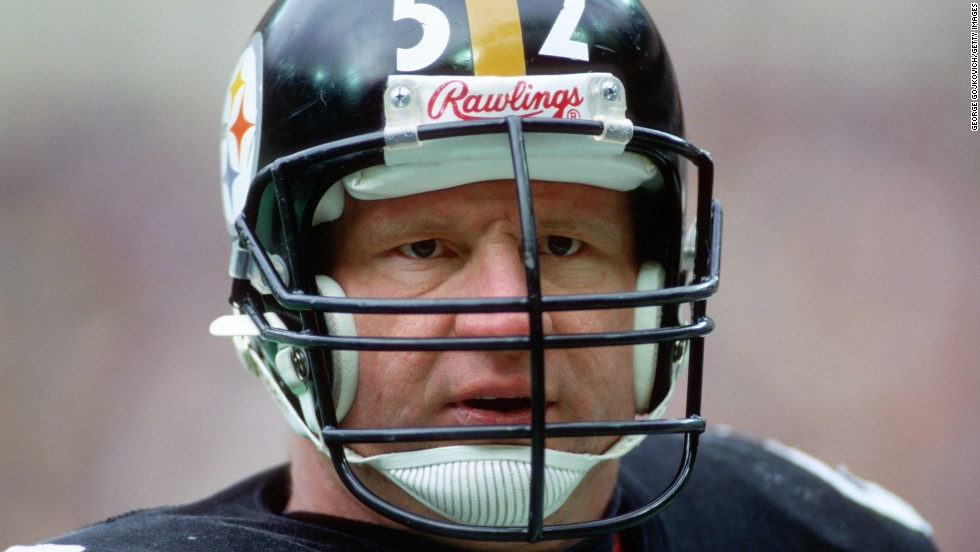Marc Martinez
Concussions in Football: Depression in Football Players
There are a few ways in which concussions can be prevented. Whether that would be getting fitted with right helmet, applying protective rules on the field, and pre-health examinations. The helmet is one of the most important pieces of equipment in any sport today. It serves to protect the important brain from jarring against the skull cavity. The evolution of the helmets has come from a long ways. According to the NFL, the first helmets worn were in the 1920’s that were made of soft leather. These types of helmets didn’t give the support that is needed to protect the brain. In today’s helmets they have hard plastic that covers the head with more support than those of the soft leather. To protect players the officials are calling penalties for targeting defenseless players and it calls for an automatic fifteen-yard penalty as well the player getting suspended from the game. This allows for players to have more safety and not suffer from huge hits that cause these concussions. Kickoffs are now kicked from the thirty-five yard line instead of the normal thirty-yard line to increase the amount of touchbacks. In doing this, it allows for the devastating blows on special teams to be decreased significantly.
 Pre-health examinations can be vital when looking into one’s health history. It is important for coaches, athletic trainers, and team doctors to have accurate medical history and previous sustained injuries including concussions. By doing this, athletic trainers can take specific actions and precautions to help the athlete be more successful. “While physicians were present at the time of injury in only 7.7% of cases of reported concussions suffered by high school athletes in the 2009-2010 school year,* ATs were on site for at least 70%. When present, they almost always were involved in the initial assessment of an athlete for concussion (94.4%)”.2
Pre-health examinations can be vital when looking into one’s health history. It is important for coaches, athletic trainers, and team doctors to have accurate medical history and previous sustained injuries including concussions. By doing this, athletic trainers can take specific actions and precautions to help the athlete be more successful. “While physicians were present at the time of injury in only 7.7% of cases of reported concussions suffered by high school athletes in the 2009-2010 school year,* ATs were on site for at least 70%. When present, they almost always were involved in the initial assessment of an athlete for concussion (94.4%)”.2
 In researching through academic literature upon the depression effect of sports-related concussions on former professional football player, it was discovered that long-term evaluation of these particular individuals has become a detrimental need with regards to advanced knowledge on cognitive depression symptoms in relationship to suicide patterns. Observed around the NFL, the increased suicide rate of retired or former professional football players and the new pattern, gone not unnoticed, of early player retirement in fear of the long-term effects of the sport. The state of scholarship upon this topic is increasing in correlation to the increase of “national attention in part, as a result of several suicides of retired professional athletes and the discussion of autopsy findings [on the Brain] of some of these deceased individuals”.1 This attention is causing a snowball effect on the sublevels of the sport: collegiate, intercollegiate, and youth. Thus, the significance of this research is in the important business of saving lives and the future of the sport of football. The purpose of this blog is to investigate the progress of research on the long-term assessment and follow-up procedures on cognitive depressive symptoms of former NFL player with recurrent concussions.
In researching through academic literature upon the depression effect of sports-related concussions on former professional football player, it was discovered that long-term evaluation of these particular individuals has become a detrimental need with regards to advanced knowledge on cognitive depression symptoms in relationship to suicide patterns. Observed around the NFL, the increased suicide rate of retired or former professional football players and the new pattern, gone not unnoticed, of early player retirement in fear of the long-term effects of the sport. The state of scholarship upon this topic is increasing in correlation to the increase of “national attention in part, as a result of several suicides of retired professional athletes and the discussion of autopsy findings [on the Brain] of some of these deceased individuals”.1 This attention is causing a snowball effect on the sublevels of the sport: collegiate, intercollegiate, and youth. Thus, the significance of this research is in the important business of saving lives and the future of the sport of football. The purpose of this blog is to investigate the progress of research on the long-term assessment and follow-up procedures on cognitive depressive symptoms of former NFL player with recurrent concussions.
References
Conover, Cullum, Didehbani, et al. Depressive Symptoms and Concussions in Aging Retired NFL Players. Journal of the National Academy of Neuropsychology. 2013;28(5): 418-424. doi:10.1093/arclin/act028 [PMC free article] [PubMed]
Meehan WP, d'Hemecourt P, Collins C, Comstock RD, Assessment and Management of Sport-Related Concussions in United States High Schools. Am. J. Sports Med. 2011;20(10)(published online on October 3, 2011 ahead of print) as dol:10.1177/0363546511423503 (accessed February 7, 2016).
No comments:
Post a Comment